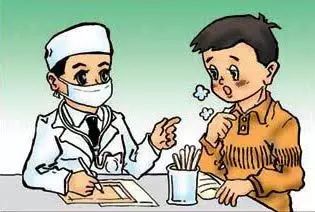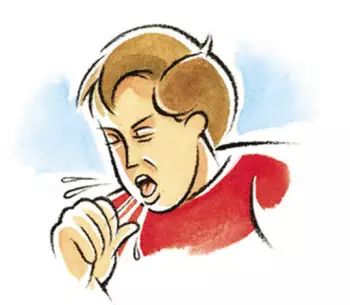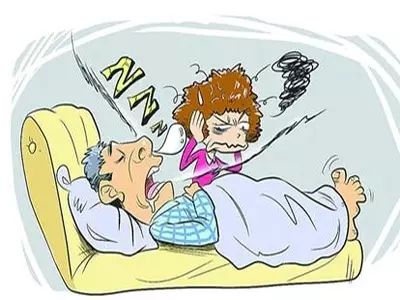【Introduction】Auscultation in TCM includes listening to various sounds from the patient, such as breathing, speech, coughing, heart sounds, vomiting, hiccups, belching, sighing, sneezing, yawning, and bowel sounds. Clinically, a stethoscope can also be used to examine lung respiratory sounds.

﹀
﹀
﹀
Abnormal Alveolar Sounds
Alveolar breath sounds are generally described as a “soft breeze” sound, similar to the sound of “fu”. The sound heard during inhalation is longer and stronger than that during exhalation, with a higher pitch, and can be heard throughout most of the lung.
Enhanced alveolar breath sounds are often due to pathogenic heat invading the lungs, causing the lungs to lose their ability to clear and regulate, resulting in coarse and high-pitched breathing. If enhanced alveolar breath sounds are localized to one side or a specific area, it indicates pathology in the opposite side or another area.

Weakened alveolar breath sounds may occur due to prolonged coughing and wheezing, leading to lung qi deficiency, which reduces the lungs’ ability to perform respiration, or due to excess heat obstructing the lungs, phlegm and blood stasis blocking the lungs, tumors compressing the lungs, or conditions like pleural effusion, pneumothorax, or rib fractures that restrict breathing.
Abnormal Bronchial Breath Sounds
Bronchial breath sounds resemble the sound of “ha” produced when breathing with the mouth open and the tongue raised. The sound is stronger the closer it is to the trachea.
Hearing bronchial breath sounds in other areas of the lung is a pathological phenomenon. This is often due to intense lung heat or phlegm-heat obstructing the lungs, or conditions such as lung abscess, tuberculosis, or malignant tumors forming cavities in the lungs, or due to pleural effusion or lung tumors compressing lung tissue, leading to enhanced sound conduction.

Rales are additional sounds accompanying respiratory sounds. A stethoscope should be used for examination.
Moist Rales
Also known as bubbling sounds, they resemble the sound of bubbles bursting when air is blown into water through a small tube, produced when air passes through bronchi containing phlegm and other secretions.
Moist rales can often be heard without a stethoscope, resembling a “rattle—rattle—” sound, which indicates coarse moist rales. These are commonly seen in patients with severe coma, wind-affected organs, or those near death, as phlegm obstructs the airways and the patient is unable to cough it out, and can also be seen in patients with lung cavities due to tuberculosis.

Moist rales often appear at the end of inhalation, with a fine crackling sound that occurs for a very short duration, referred to as fine moist rales. These are commonly seen in patients with phlegm obstructing the lungs or cough and wheezing due to pathogenic heat obstructing the lungs, tuberculosis, and lung abscess.
Dry Rales
These are prolonged musical respiratory sounds, hence referred to as musical rales. Their occurrence is related to airway narrowing, spasms, or phlegm adhering to the airways, or tumors or foreign bodies compressing the airways, or blood stasis obstructing the airways, commonly seen in patients with lung cough, emphysema, asthma, and water retention due to kidney yang deficiency.

Bronchial Breath Sounds
These sounds are produced by turbulent airflow in the glottis, trachea, or main bronchi, similar to the sound of “ha” produced when exhaling with the tongue raised. Bronchial breath sounds are high-pitched and strong. Compared to inhalation, the sound during exhalation is stronger, higher in pitch, and longer in duration. In normal individuals, bronchial breath sounds can be heard in the larynx, suprasternal notch, and near the 6th and 7th cervical vertebrae and the 1st and 2nd thoracic vertebrae.

Alveolar Breath Sounds
These sounds are caused by airflow in and out of the bronchioles and alveoli. During inhalation, air flows through the bronchi into the alveoli, causing the alveoli to tense, and during exhalation, the alveoli relax. Alveolar breath sounds resemble the sound of “fu” produced when the upper teeth lightly bite the lower lip during inhalation, characterized by a soft, breezy quality, with a lower pitch and weaker sound. Compared to exhalation, inhalation sounds are stronger, higher in pitch, and longer in duration. In normal individuals, alveolar breath sounds can be heard throughout the chest except in areas where bronchial breath sounds and bronchoalveolar breath sounds are present.
Low-Pitched Dry Rales
Also known as snoring sounds. They have a low pitch, with a fundamental frequency of about 100-200Hz, similar to snoring during deep sleep, often occurring in the trachea or main bronchi.

Coarse Moist Rales
Also known as large and small bubble sounds. They occur in the trachea, main bronchi, or cavitary areas, often appearing early in inhalation. They are seen in bronchiectasis, severe pulmonary edema, and cavitary tuberculosis or lung abscess. Patients in a coma or near death may be unable to expel respiratory secretions, and coarse moist rales can be heard in the trachea, sometimes audible without a stethoscope, referred to as phlegm rales.
Medium Moist Rales
Also known as medium and small bubble sounds, they occur in medium-sized bronchi, often appearing in the mid-phase of inhalation. They are seen in bronchitis or bronchopneumonia.
Fine Moist Rales
Also known as small bubble sounds. They occur in small bronchi, often appearing late in inhalation. Commonly seen in bronchiolitis, bronchopneumonia, pulmonary congestion, and pulmonary infarction.
Pleural Friction Rub
Pleural friction rub occurs when the pleural surfaces become rough due to inflammation, producing sound during breathing. The nature of the sound varies greatly; some sounds are soft and subtle, while others are very rough. Both inhalation and exhalation can produce sounds. Generally, the sound is more pronounced at the beginning of inhalation and before exhalation begins; it disappears when breath is held and increases during deep breathing, allowing differentiation from pericardial friction rub. Patients can be instructed to pinch their nose and close their mouth while enhancing abdominal movement; even without airflow in and out of the airways, pleural friction rub can still be heard, distinguishing it from crepitations. The most common area to hear pleural friction rub is the anterior lower chest wall, as this area has the greatest respiratory movement.
Warm Reminder
This article introduces the respiratory sounds of the lungs, and it is important to pay attention to lung respiratory issues in daily life. Major illnesses often accumulate from minor ailments; therefore, it is essential to observe one’s body regularly and assess health conditions early to seek treatment at the optimal time.



